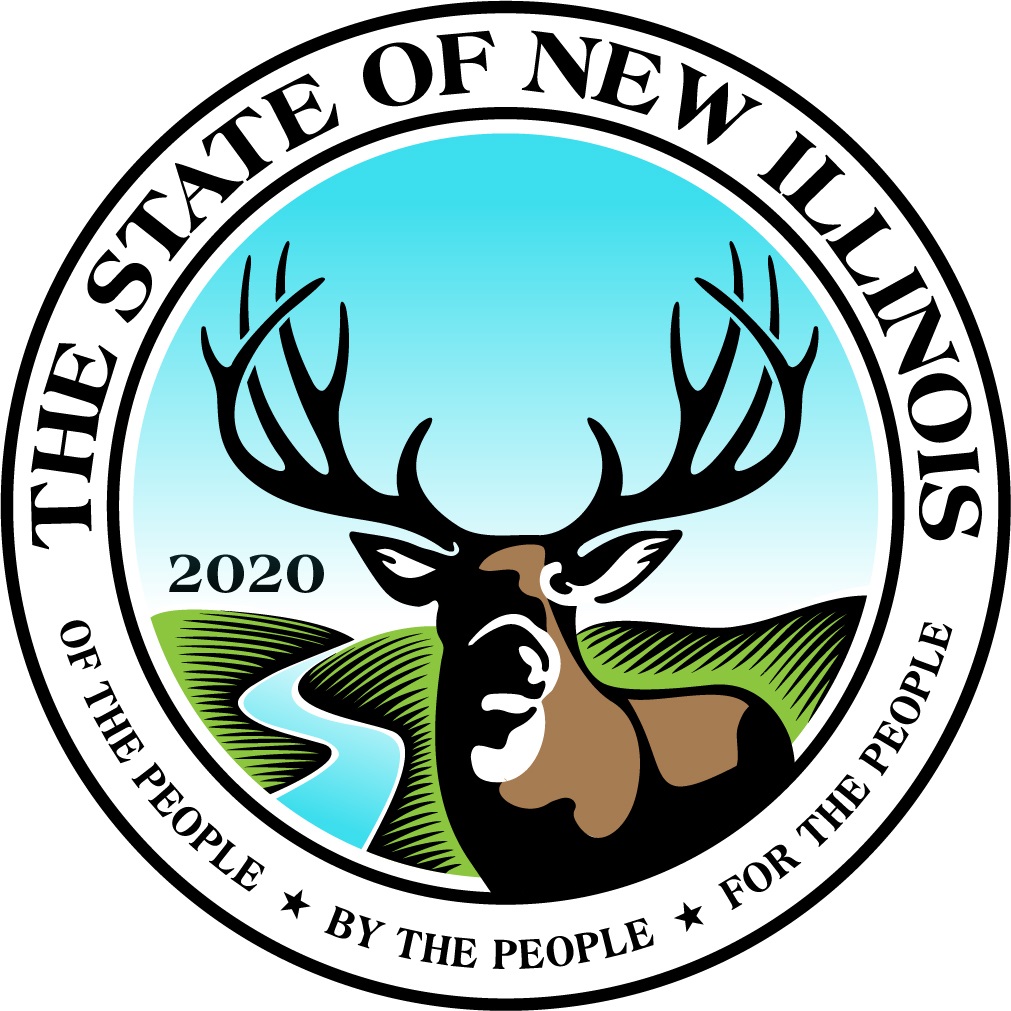New Illinois group to hold two-day convention in Quincy about separating downstate from Cook County

QUINCY — The third session of a constitutional convention to propose separating downstate Illinois from Chicago and Cook County will be held Friday and Saturday, May 5-6, at the Holiday Inn, 4821 Oak. The Friday night and Saturday morning presentations are open to the public.
The event is presented by New Illinois. It describes itself as a nonpartisan, nonprofit organization with the mission of “educating Illinoisans about their right, under the U.S. Constitution, to pursue the formation of a new state.”
Speakers will include:
- David Shestokas, constitutional lawyer, Illinois Attorney General candidate and author of “Creating the Declaration of Independence and Constitutional Sound Bites.” He has been involved in election law for more than 30 years.
- Diane Benjamin, government watchdog and publisher of BLN News out of Bloomington-Normal. She will talk about her experiences in uncovering corruption in Illinois.
“The United States Constitution gives us the right to representative state government,” according to a news release issued from New Illinois. “But Illinois gives power to favored people, groups and municipalities — notably Chicago and Cook County — which means it’s not fulfilling its responsibilities to the rest of its citizens.”
The group claims Illinois has “violated both the U.S. and the Illinois Constitutions, infringed on our rights and deprived the people of representative government. For these reasons, it has lost its legitimacy. Illinois has broken the compact that bound us together.”
Brown County, along with Hardin County and the northeastern portion of Madison County, voted in November to pass “separation referendums.” Those three counties joined 23 other counties and two townships in passing similar referendums, representing more than 25 percent of Illinois’ 102 counties.
Hancock County joined the counties of Clark, Clay, Crawford, Cumberland, Edwards, Effingham, Fayette, Jasper, Jefferson, Johnson, Lawrence, Marion, Massac, Moultrie, Pope, Richland, Shelby, Wabash, Wayne and Whiteside to pass separation referendums after the 2020 election. Except for Brown and Hancock, the other counties are in the southeastern portion of the state between Springfield and Evansville, Ind.
Nearly 77 percent of 1,887 voters in Brown County approved the November referendum.
David Ferrill, chairman of the Brown County Board, said a separationist group led by Kenny Oswald and David Curfman led the movement to get enough signatures to put the issue — “Should Brown County enter into discussions to separate from Cook County?” — on the ballot.
“Unfortunately, there’s a lot of voters (in Brown County) who didn’t understand,” Ferrill said. “They thought they were voting to separate from Cook County.”
Ferrill called the issue “very complicated.”
“We were fully aware that our voters wish for us to look into it. So we will look into it,” he said. “If we decided, as one county, to separate, I don’t think it will ever happen. If there were a whole bunch of counties, I think it would be a different story, perhaps.”
Ferrill says he’s trying to learn about the process and the financial impact of such a decision.
“I’m just scratching the surface,” he said. “‘Let’s just separate from Chicago’ isn’t nearly as simple as it seems.”
John Jackson, visiting professor for Southern Illinois University Carbondale’s Paul Simon Public Policy Institute, told the Jacksonville Journal-Courier in November it would be “almost impossible” for the 27 counties to leave Illinois. He claimed no one has pulled a secessionist movement like this, pointing to other movements in upstate New York and northern California as examples.
The New Illinois website says it seeks a state split in the same way West Virginia split from Virginia.
“One could argue about West Virginia leaving Virginia at the start of the Civil War,” Jackson told the Journal-Courier. “That was an unusual circumstance. They were given unusual leeway to do so, given that Virginia had seceded.”
Jackson said it would take both the Illinois General Assembly allowing the counties to secede and an act of Congress to legitimize the new state. He said both events were unlikely to happen.
“Congress is not going to get into the business of creating new states,” he said.
If the counties got their way, Jackson says he believes it would be a disaster for southern and central Illinois. He claims Chicago financially supports both regions more than people realize.
A 2018 paper written by Jackson and SIU Summer Institute Administrative Director John L. Foster found that for every $1 paid to the state in tax, central Illinois received about $1.87 with southern Illinois getting $2.83. The paper said Cook County got about 90 cents of every tax dollar. The outlying suburban counties get back about 53 cents.
The United States Constitution offers states a process to divide or merge with other states in Article IV, Section 3.
Loret Newlin runs the Illinois Separation Referendum page on Facebook. She says separationists must continue recruiting people and sending out resolutions.
“How many counties before we can begin the next step? One board member answered it this way: ‘All of them,'” Newlin said in an interview conducted by Muddy River News through Facebook Messenger. “That would be ideal but not required, as evidenced by the precedence set by West Virginia. We certainly need a lot more than 26 counties, though.”
Newlin said the most frequent reason people give for wanting the state split is that their vote doesn’t matter and their voices aren’t heard.
“It always goes the way Chicago wants and not what we want,” Newlin said. “So many laws that are passed are really for the city of Chicago. They are inappropriate and oppressive to the rest of the state.”
Miss Clipping Out Stories to Save for Later?
Click the Purchase Story button below to order a print of this story. We will print it for you on matte photo paper to keep forever.

